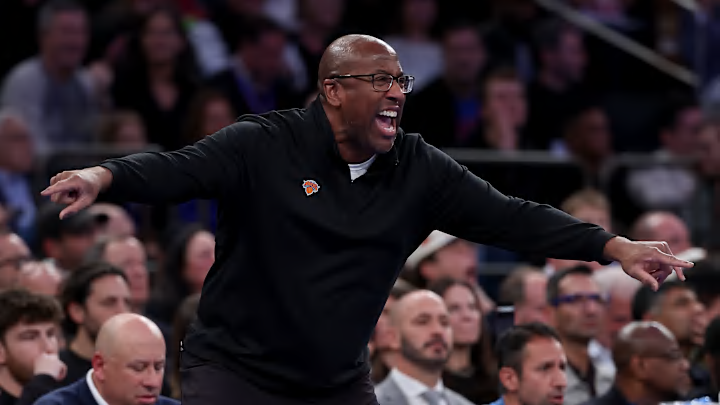Mike Brown has not shied away from implementing a ton of changes since taking the reins of the New York Knicks. During Friday' s victory over the Miami Heat, he baked in another major tweak, one that likely left his predecessor, Tom Thibodeau, wide-eyed in a combination of shock and, potentially disgust: zone defense.
The Knicks zoned up for a total of 33 possessions in their 140-132 win. As the folks over at the All NBA Podcast podcast note, this is more zone than New York played all of last season:
The Knicks' defense played zone for 33 possessions last night.
— ALL NBA Podcast (@ALLCITY_NBA) November 15, 2025
They played 14 total possessions of zone defense from the 2020-21 season through the 2024-25 season.
More than doubling up the total volume of last year’s zone-defense possessions in one game is bonkers stuff. It speaks, of course, to how little Thibs relied upon it, and how reluctant he was to use it. But it’s also a nod to Brown’s willingness to experiment, endlessly, in search of what works.
And for the record, it turns out the Knicks’ zone defense could work.
Should the Knicks play more zone moving forward?
The cop-out answer to this question: Well, maybe.
Zone defense isn’t something to be used as a crutch. It’s risky business against quality jump-shooting teams, and New York is already getting burned from the perimeter so far.
Still, it can be a game-altering asset when deployed in the right situation.
Though the Heat drive the ball a ton, they weren’t able to create the separation necessary to bust through New York’s zone. Without Bam Adebayo in the lineup, they also lacked the interior engine capable of manipulating or capitalizing on zone coverages.
Brown deserves credit for timing the Knicks’ defensive shift amid his own personnel concerns. The team was left shorthanded on the defensive end once OG Anunoby exited with a hamstring injury, and became even shallower as Robinson battled foul trouble. As one example, New York busted out the zone immediately after the big man picked up his fourth foul.
The results were pretty good—exceptional, even, when you consider the offensive onslaught both the Knicks and Heat delivered. Miami averaged close to 1.39 points per possession for the game, but was at 0.94 points per possession when facing New York’s zone.
The zone defense against the Heat isn’t the point
Perhaps the Knicks turn to zone more often versus certain matchups moving forward, or when they’re fielding lineups light on man-to-man-coverage talent and/or rim protection. But the frequency with which they dust it off matters less, for the most part, than Brown’s willingness to try it at all.
Flexibility is more important than ever. Teams must understand how to adjust, in a variable mixed bag of ways, on the fly. Styles make fights in the NBA, but the bandwidth to play different styles, at both ends, can ensure you never stumble into a fight you can’t win.
For all of New York’s imperfections—and rest assured, there are plenty—this group is decidedly entering its #TryStuff era. From more dual-big lineups to additional three-guard looks to leaning on a veteran journeyman like Landry Shamet, Brown is unafraid of testing the unknown, and of the trial-and-error that comes with it.
Not all of his decisions are winners. His rotation can get weird. He still isn’t making the development of youth a priority. Deuce McBride’s role is all over the place. The list goes on.
The list of things Brown appears to be getting right, though, is longer. Chief among his hits is the decision to experiment, at both ends, in hopes that the sum of the information gained leaves New York more dangerous than ever when it matters most.
